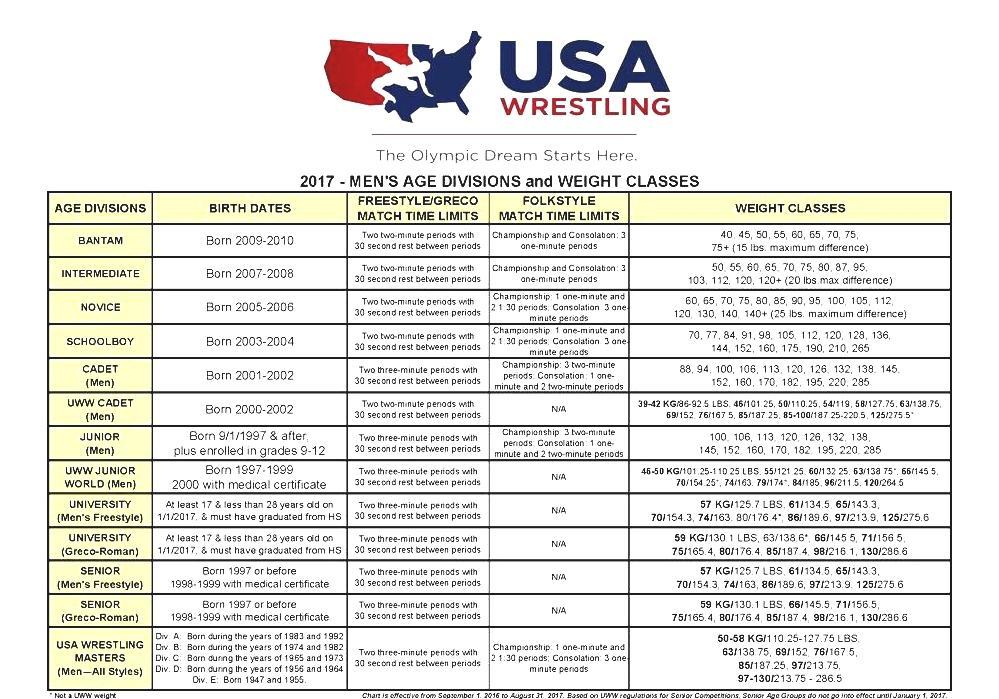Wrestling is a sport that requires not only physical strength and agility but also strategic thinking and weight management. One of the most crucial aspects of wrestling is the classification of athletes into various weight classes. This system is designed to ensure fair competition by matching wrestlers of similar body weights against each other. Understanding wrestling weight classes is essential for both competitors and fans alike, as it influences the dynamics of the sport and the strategies wrestlers adopt during matches.
The structure of weight classes in wrestling allows for a more level playing field, enabling athletes to compete against opponents who are more evenly matched in terms of size and strength. This classification system varies across different wrestling organizations and levels, including high school, college, and professional wrestling. Each organization sets its own weight limits, which can lead to variations in how wrestlers prepare and strategize for their matches.
As athletes navigate their way through the competitive landscape of wrestling, they must also consider how weight classes impact their training regimens, dietary choices, and overall performance. This article delves into the intricacies of wrestling weight classes, exploring the significance of these divisions, who they affect, and the strategies wrestlers employ to succeed within them.
What Are the Different Wrestling Weight Classes?
Wrestling weight classes are categorized based on the weight of the athletes. Each level of wrestling—whether it be high school, collegiate, or professional—has its own set weight classes. Below are some common weight classes used in various wrestling organizations:
- High School: Typically ranges from 106 pounds to 285 pounds.
- Collegiate (NCAA): Generally ranges from 125 pounds to 285 pounds.
- Folkstyle Wrestling: Similar to collegiate but may differ slightly in class limits.
- Freestyle and Greco-Roman: Have weight classes that can vary internationally, often from 57 kg (125.5 lbs) to 130 kg (286.6 lbs).
Why Are Weight Classes Important in Wrestling?
Weight classes are vital for several reasons:
- Fair Competition: They ensure that matches are fair by pitting opponents against each other who are similar in size.
- Safety: Reduces the risk of injury that could arise from mismatches in size and strength.
- Strategic Preparation: Wrestlers can tailor their training and nutrition plans based on their weight class.
How Do Wrestlers Cut Weight?
Wrestlers often enter a rigorous process known as "weight cutting" to qualify for their desired weight class. This process can include:
- Dieting: Implementing strict dietary restrictions to lose weight.
- Exercise: Engaging in intense cardiovascular workouts to shed extra pounds.
- Dehydration: Limiting fluid intake before weigh-ins to meet weight requirements.
What Are the Risks of Cutting Weight?
While cutting weight is a common practice in wrestling, it poses several risks, including:
- Dehydration: Can lead to impaired performance and serious health issues.
- Nutritional Deficiencies: May arise from extreme dieting, impacting overall health.
- Loss of Muscle Mass: Rapid weight loss can result in the loss of strength and endurance.
What Weight Classes Are Used in Professional Wrestling?
Professional wrestling, unlike amateur wrestling, often has more flexibility in terms of weight classes. Some common weight divisions in professional wrestling include:
- Lightweight: Up to 205 lbs
- Middleweight: Up to 225 lbs
- Heavyweight: Over 225 lbs
How Do Weight Classes Affect Wrestler Performance?
The impact of weight classes on a wrestler's performance can be significant. Competing in a weight class that is too low may leave an athlete undernourished and weak, while wrestling in a higher class can lead to facing larger and stronger opponents. Wrestlers need to find a balance that maximizes their physical capabilities while adhering to their respective weight classes.
Who Are Some Famous Wrestlers and Their Weight Classes?
Many famous wrestlers have made their mark in the world of wrestling, showcasing their skills within various weight classes. Below is a brief overview of a few notable wrestlers and their associated weight classes:
| Name | Weight Class | Achievements |
|---|---|---|
| John Cena | Heavyweight | 16-time World Champion |
| Daniel Bryan | Heavyweight | 4-time World Champion |
| Rey Mysterio | Lightweight | 2-time World Champion |
How Do Coaches Help Wrestlers with Weight Classes?
Coaches play a pivotal role in guiding wrestlers through the complexities of weight classes. They assist in:
- Nutrition Planning: Creating meal plans that help wrestlers manage their weight healthily.
- Training Regimens: Designing workouts that focus on strength, endurance, and skill development.
- Weight Management: Monitoring and advising on safe weight loss techniques.
What Are the Future Trends in Wrestling Weight Classes?
The world of wrestling continues to evolve, and so do the concepts surrounding weight classes. Some potential trends include:
- More emphasis on health and safety regulations regarding weight cutting.
- Increased awareness of the long-term effects of extreme weight loss.
- Adaptation of weight classes to promote inclusivity, such as recognizing non-binary athletes.
In conclusion, wrestling weight classes are a fundamental aspect of the sport, influencing everything from training and strategy to competition and athlete safety. As the sport continues to adapt and grow, understanding the nuances of weight classes will be essential for wrestlers, coaches, and fans alike.
You Might Also Like
Understanding The Size Of Yorkipoo Puppies: A Complete GuideUnleashing Creativity: The Power Of Anime Creation Tools
Exploring The Fascinating World Of The 11 Sided Shape
The Art Of Sound: Discovering The Best Album Covers
Mastering The Art Of Culinary Exploration With Unlock NYT Cooking
Article Recommendations
- Kilmer Top Gun
- Sam Reid Spouse
- Stana Katic Is A Doctor
- Julio Jose Gonzalez
- Sean Evans Height
- Nina Ian
- Who Is Kellen Moores Wife
- Melissa Sue Anderson
- Karen Carney Is She Married
- Duck Hunting Season Illinois 2024

